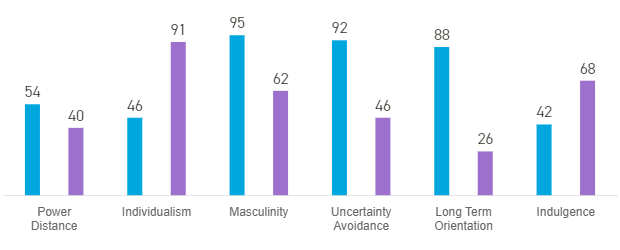Artifact 1
Item to Archive #2 was to research Hofstede’s five dimensions that are used to differentiate between cultures. During this activity I compared two countries scores on their value dimensions. These five dimensions that were scored consisted of: Individualism, Masculinity, Uncertainty Avoidance, Long-Term Orientation, and Power Distance. To begin, I compared my country, the United States to Japan which is a country I hope to visit in the future.
Understanding the role each of the value dimensions play in a countries culture is relative to helping become knowledgeable about the differences and similarities between each other. For example, Japan scored significantly higher than the U.S. in the dimension of Long-Term Orientation. In this dimension the culture maintains links to its past while dealing with challenges of the present. Japan itself is one of the most oriented societies as they believe you do your best in life with the time you have.
The image below is representation of each dimension and its comparison between the United States and Japan. The last category is an extra dimension, Indulgence. I found this dimension the most interesting because countries that score on the lower end of this dimension are seen to show restraint which is the opposite of indulgence. This shows a lack of or weak control of desires and impulses.

